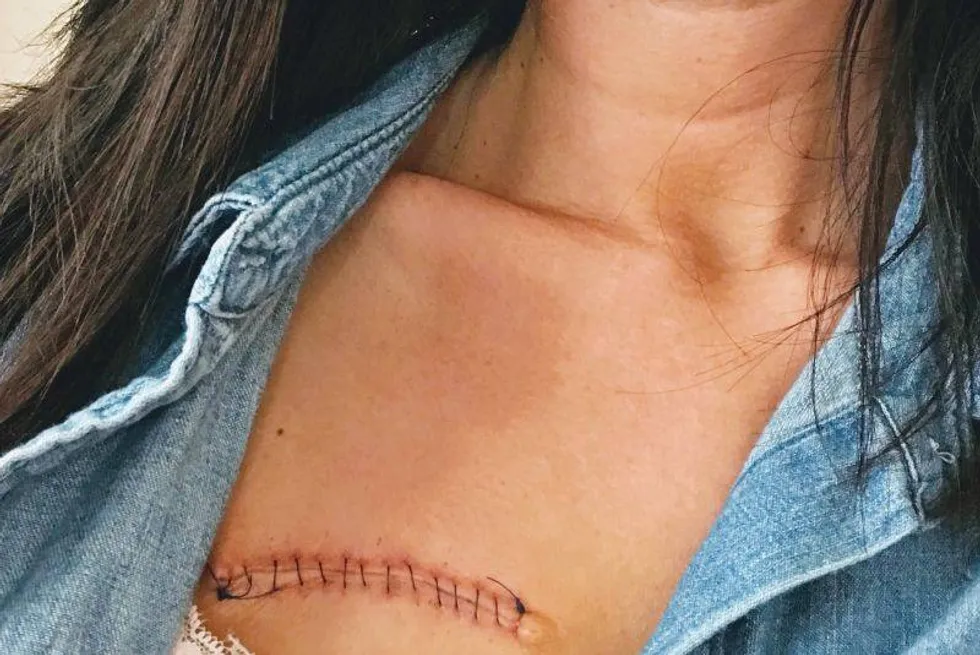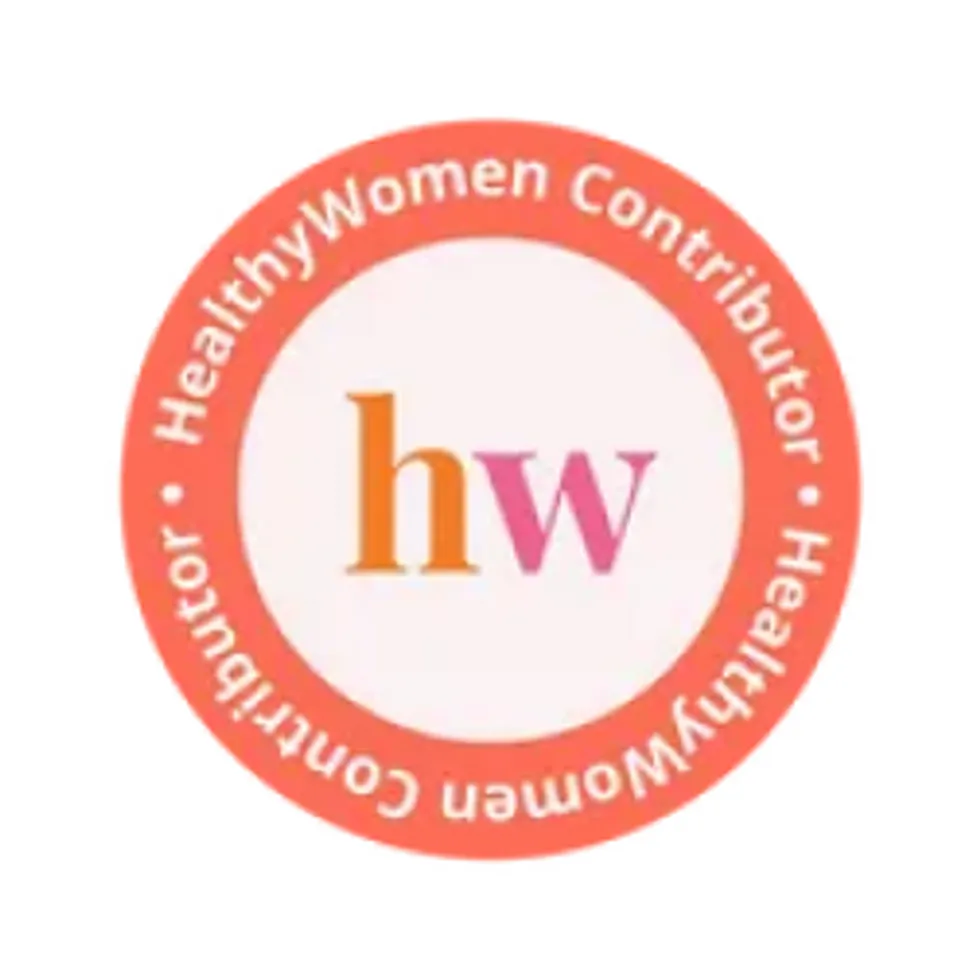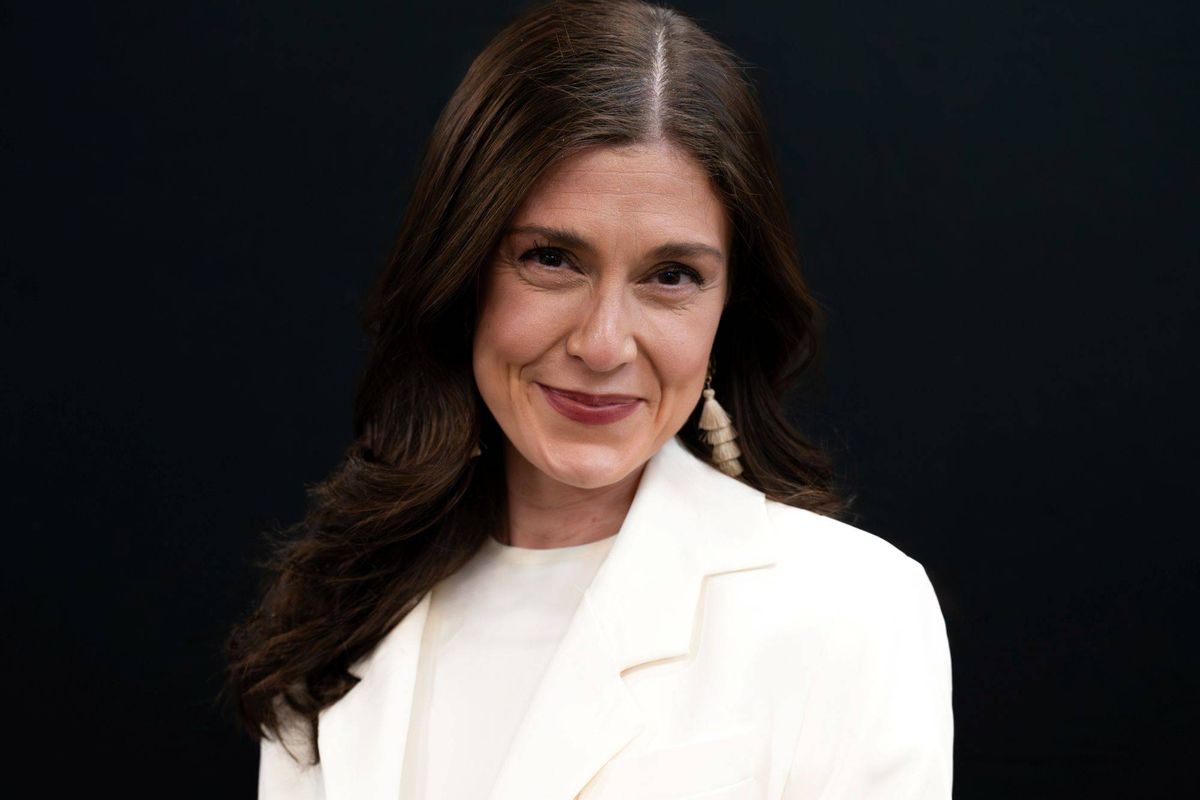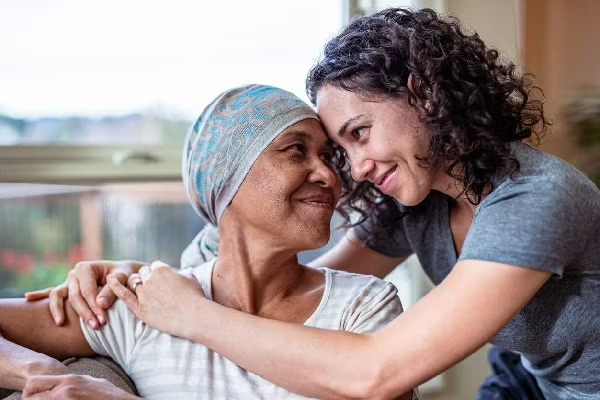As told to Erica Rimlinger
I used to be the person who showed up to the Christmas party every year bronzed and glowing with a fresh tan. A tan was part of my regular beauty routine, and I felt incomplete without one. I never dreamed I’d walk into my longtime tanning salon and cancel my membership, but that day arrived.
The cancellation form asked me to provide a reason. In big letters, I wrote: MELANOMA. I was 26 years old, newly diagnosed with one of the deadliest forms of skin cancer and furious with myself for ignoring the warnings in the small print of my contract. The salon employee looked at my completed form, said, “OK, you’re all set,” and walked away.
Earlier, my mom had urged me to get a mole on my chest checked. She was worried because my dad had been diagnosed with stage 0 melanoma the month before. I thought my dad’s diagnosis was understandably making her a little paranoid. Just five weeks after my 26th birthday, I was nowhere near my dad’s age, and my suspicious mole looked nothing like his. Mine wasn’t big like my dad’s mole — but it was multi-colored with uneven edges.
I dismissed her with a “Sure, Mom,” but her worry lodged in my brain. I went down a Google rabbit hole and looked at too many pictures of suspicious moles. I finally thought, OK, it wouldn’t hurt to get a skin check with a dermatologist.
I was a little unprepared for the experience of standing naked, head to toe, in front of a doctor I’d met five seconds earlier. I have a lot of moles, and as the doctor inspected them, he asked about my tanning bed use, family history of melanoma and sun habits. I started to feel uncomfortable and a little defensive. I live in Ohio where we don’t get much sun, and a tan is a beauty standard. You wouldn’t see a model without a tan, right? The doctor asked if I had any moles that concerned me. Stubbornly, I said no.

He zoomed in on the one my mom disliked, however. It didn’t look like the rest of my moles. He removed it for a biopsy, and I thought, “Great. All done.” I’d heard of people getting pre-cancerous moles removed all the time. It didn’t mean anything bad was happening. My mom would be happy I got my skin check, and I admit I felt a little better too.
The doctor said I’d get the results in three to five business days, but after 10 days I’d heard nothing. I called the medical office and asked if they’d lost my mole. The medical team apologized and said they’d sent it out for additional testing. That’s when I felt the first negative vibe.
On the 14th business day after the biopsy, I was in the car with my husband when the dermatologist office called with my results. The grim tone of my doctor’s voice announced the melanoma before the word was even spoken. Thank goodness my husband was driving. I had stage 1a, bordering on 1b, melanoma. My first thought was, “This is worse than my dad’s.” Then I thought, “How could this be worse than my dad’s?” The doctor recommended immediate surgery and a lymph node test. The entire call lasted less than 10 minutes, but it had stripped all the color from my face and my world.
Two weeks after that phone call, I checked in to the hospital for an eight-hour day. I’d never had anesthesia before. The only medical procedure I’d had was my wisdom teeth removal. I woke up from surgery with two big incisions and a wave of grief for the life I didn’t have anymore. I didn’t just enjoy being tan. Tanning was rooted deeply in my body image. In addition to grief, I also felt anger with myself, with the sun, and even with my dad’s habit of getting sunburned mowing the lawn or playing golf.
I wanted to run, lift weights and lay out in the sun again. The first two desires would have to wait until I healed, and the third was no longer an option for me. I’d have to change my lifestyle — and cancel my tanning salon membership.
I ended my pity party after about a month and a half. I realized it was getting me nowhere, and I was being given an opportunity to learn, change my habits and appreciate my second chance. But I’d do this quietly, telling almost no one because of the shame I felt about my diagnosis.

For the next two years after my surgery, I got frequent skin checks and more biopsies than I could count. My whole body felt like it was being sliced up. Under the weight of the mental, emotional and physical burden of survivorship, I realized I needed support. It was time to share my story.
On social media, I found #melanoma and was stunned to see how many young people in their 20s were sharing their melanoma stories. I took a picture of my scars, posted it, then panicked and threw the phone across the room.
The scorn, shame and “told you so” messages I expected never appeared — not even once. My community gave me love and support instead, and I was so grateful. Once I started connecting with other melanoma survivors and advocates, my burden lifted.
I’m glad I reached out for support when I did. My dad’s melanoma returned in his brain and lungs. After 21 rounds of immunotherapy, gamma knife radiation and multiple trips to the emergency room, my dad’s lesions began shrinking. Today, my dad is still here, and his melanoma is almost gone. We’re so grateful, and this experience has brought our family much closer together.

I now own my sun-loving past. Instead of silently shaming myself, I speak up and advocate for sun care and skin checks. I serve as a volunteer for Melanoma Research Foundation, and I’m on the leadership committee for Melanoma Research Alliance (MRA). For MRA, I go to Capitol Hill every year, urging Congress to protect research funding, ban tanning beds and investigate better sunscreen ingredients.
Instead of beating myself up for neglecting sun safety as a teen and young adult, I’m working to change the culture that encourages people to ignore the risks of tanning. I still show up to Christmas parties glowing — but with gratitude, not a tan.
This educational resource was created with support from Merck.
Have your own Real Women, Real Stories you want to share? Let us know.
Our Real Women, Real Stories are the authentic experiences of real-life women. The views, opinions and experiences shared in these stories are not endorsed by HealthyWomen and do not necessarily reflect the official policy or position of HealthyWomen.
- Metastatic Melanoma 101 ›
- I Thought I Was Too Young to Get Melanoma ›
- Melanoma Rates Are Rising. How Can You Protect Yourself? ›
- Fast Facts: What You Need to Know About Skin Cancer ›
- Melanoma 101 ›




